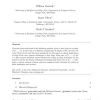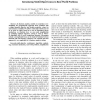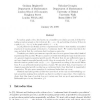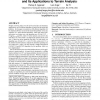8 search results - page 1 / 2 » Finding large 3-free sets I: The small n case |
JCSS
2008
13 years 4 months ago
2008
There has been much work on the following question: given n, how large can a subset of {1, . . . , n} be that has no arithmetic progressions of length 3. We call such sets 3-free....
DAGSTUHL
2004
13 years 5 months ago
2004
A well-studied problem in fault diagnosis is to identify the set of all good processors in a given set {p1, p2, . . . , pn} of processors via asking some processors pi to test whet...
ISDA
2010
IEEE
13 years 2 months ago
2010
IEEE
Abstract--In business analysis, models are sometimes oversimplified. We pragmatically approach many problems with a single financial objective and include monetary values for non-m...
RSA
2010
13 years 2 months ago
2010
A random graph order, also known as a transitive percolation process, is defined by taking a random graph on the vertex set {0, . . . , n − 1}, and putting i below j if there i...
COMPGEOM
2006
ACM
13 years 8 months ago
2006
ACM
Despite extensive study over the last four decades and numerous applications, no I/O-efficient algorithm is known for the union-find problem. In this paper we present an I/O-effic...




